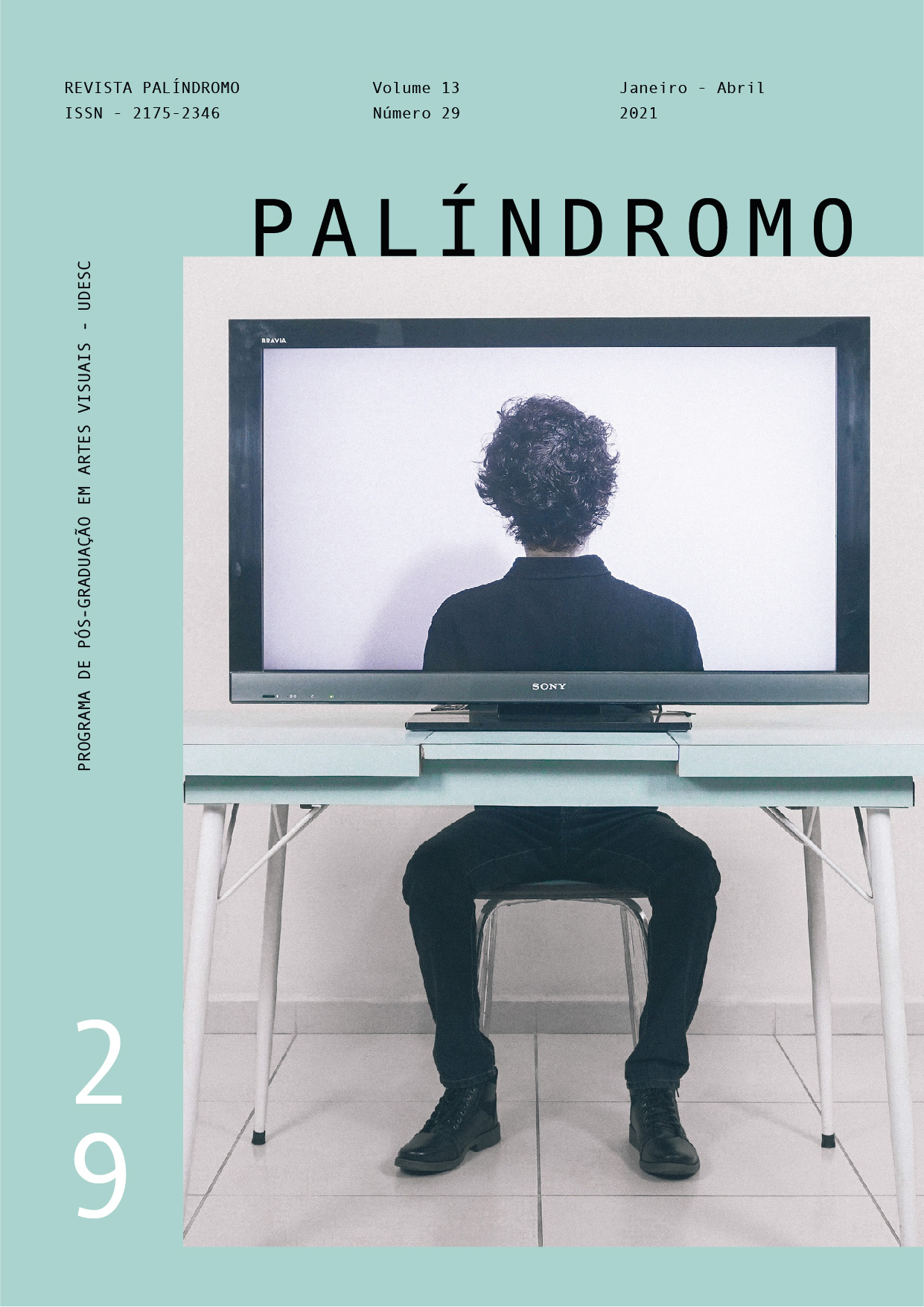Digital hybridization of plastic arts courses in Master teaching:
a tool, a means? For what issues?
DOI:
https://doi.org/10.5965/2175234613292021022Palabras clave:
Mix-learning., Postgraduate education., Teacher formation., Visual arts.Resumen
In the context of the global health crisis, our research started four years ago on the question of how to reconcile the teaching of the plastic arts and their practice within the training of the future teacher of schools when there is less and less hours of face-to-face lessons is all the more a topical subject. Indeed, at the present time, university courses are conducted remotely. Our study thus raises the question of the quality and content of the distance course in order to bring about plastic practices among students, future teachers. The hourly decline of this teaching over the past few decades questions the legitimacy, the stakes and the place of the student’s plastic practice. Likewise, the changes and challenges of teaching methods, particularly the emergence
of hybrid training through the use of digital technology, question posture changes in the trainer.
Descargas
Citas
ARDOUIN, I. L’éducation artistique à l’école, Pratiques et enjeux pédagogiques,
ESF, 1997.
BOLTANSKI, L. ; THEVENOT, L. De la Justification, les économies de la grandeur,
Gallimard, 1991.
GABILLIET, P. Savoir anticiper, ESF, Formation permanente, 1999.
JACQUINOT-DELAUNAY, G. ; FICHEZ, E. L’université et les TIC: chronique d’une
innovation annoncée, 2008.
LADAGE, C. L’hybridation dans l’enseignement universitaire pour repenser l’arti-
culation entre cours magistraux et travaux dirigés. Revue internationale de Péda-
gogie de l’Enseignement Supérieur, 32-2, 2016.
PAQUIENSEGUY, F, & PEREZ-FRAGOSO C. L’hybridation des cours et l’intégration
de l’injonction à produire. Distances et savoirs, 4-9, 2011.
PERAYA, D, CHARLIER, B, & DESCHRYVER, N. Une première approche de l’hybrida-
tion. Education & Formation, e-301, 2014.
POULOT, D, PIRE, J-M, & BONNET, A. L’éducation artistique en France, des modèles
académiques aux pratiques actuelles. PUF Rennes, 2010.
RUPPIN, V. Les arts plastiques en France : une discipline scolaire en mutation, Spi-
rale, 58, 2016.
RUPPIN, V. De l’art que l’on dit à l’art qui se fait : étude menée dans les classes à
projets artistiques à l’école primaire. Revue des Sciences de l’éducation, 40, 2014.
RUPPIN, V. ; SAFADI, S. Construire un « à-venir » ? Tout est dans la manière. Usage
de la modélisation dans l’enseignement des arts plastiques, PU Rennes, sous presse
RUPPIN, V, SAFADI, S, & ZARAGORI, A. How to mobilize visual arts as a form of ci-
tizen expression In YearBook: Student Voice in education, CIDREE Consortium of Institutions for Development and Research in Education in Europe, 2019.
VINCENT, G. L’école primaire française, Lyon, PUL, 1980. DOI: https://doi.org/10.4000/books.pul.30073
WESTBERRY, N, & FRANKEN, M. Pedagogical distance: explaining misalignment in
student-driven online learning activities using Activity theory. Revue Teaching in
Higher Education, 2015.
Publicado
Versiones
- 2021-02-02 (2)
- 2021-01-01 (1)
Cómo citar
Número
Sección
Licencia
Derechos de autor 2020 Virginie Ruppin

Esta obra está bajo una licencia internacional Creative Commons Atribución 4.0.
DECLARAÇÃO DE DIREITOS AUTORAIS
a. Os artigos publicados pela revista são de uso gratuito, destinados a aplicações acadêmicas e não comerciais. Todos os direitos autorais são atribuídos à revista. Os artigos cujos autores são identificados representam a expressão do ponto de vista de seus autores e não a posição oficial da Revista Palíndromo. O (s) autor (es) compromete-se sempre que publicar material referente ao artigo publicado no Palíndromo mencionar esta publicação da seguinte forma:
Este artigo foi publicado originalmente pela revista Palíndromo em seu volume (coloque o volume), número (coloque o número) no ano de (coloque o ano) e pode ser acessado em: http://www.revistas.udesc.br/index.php/palindromo
b. Plágio, em todas as suas formas, constitui um comportamento antiético de publicação e é inaceitável. A revista Palíndromo utiliza o software iThenticate de controle de similaridade


